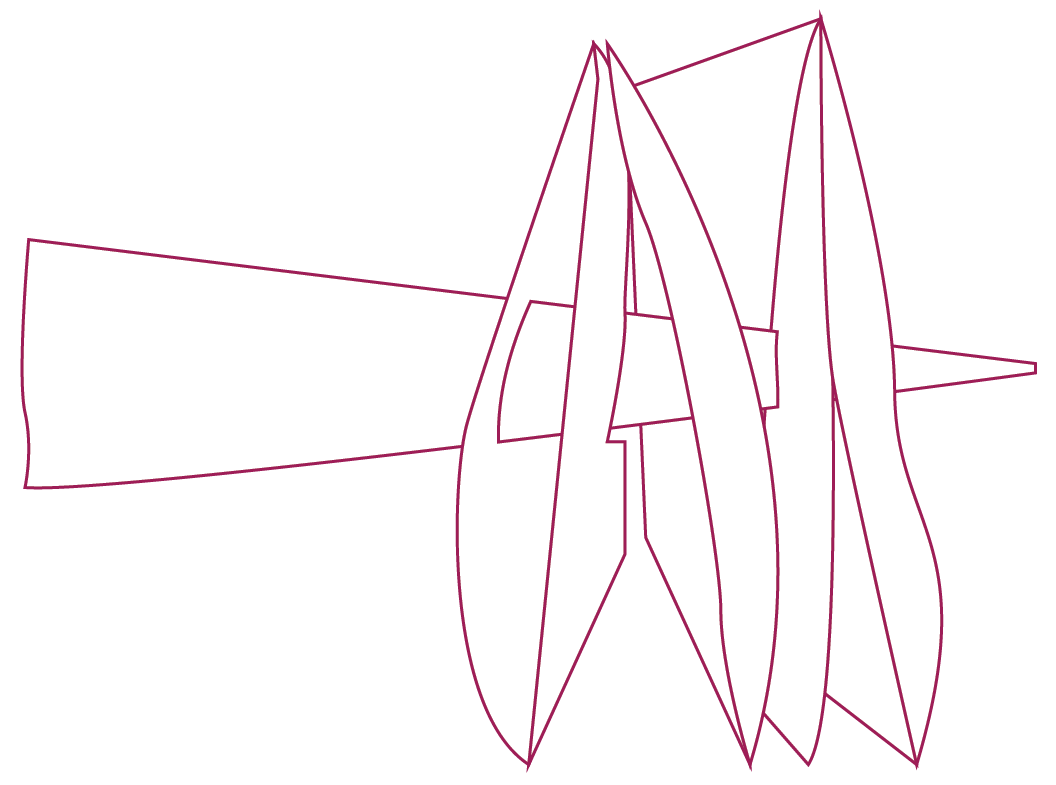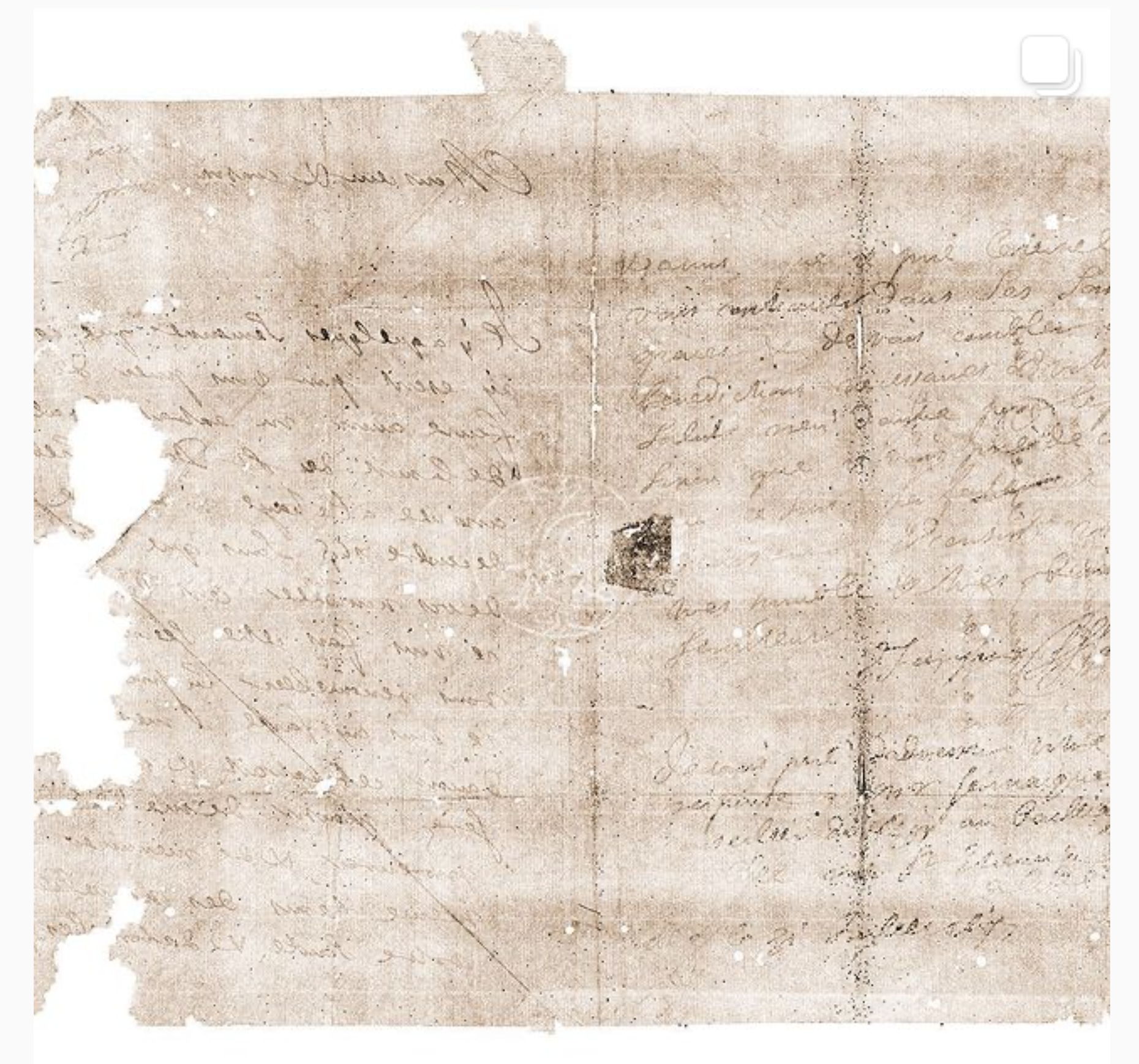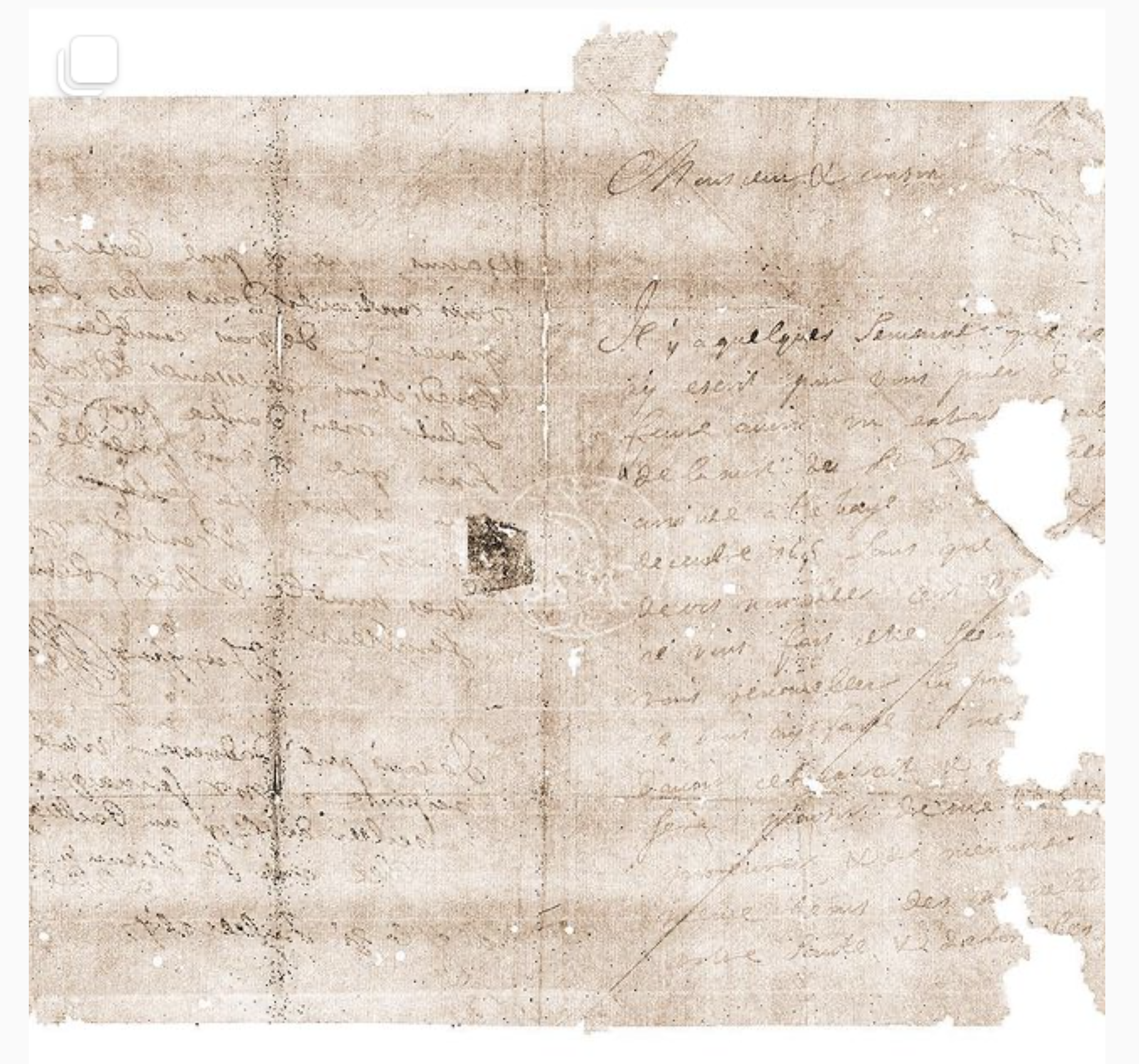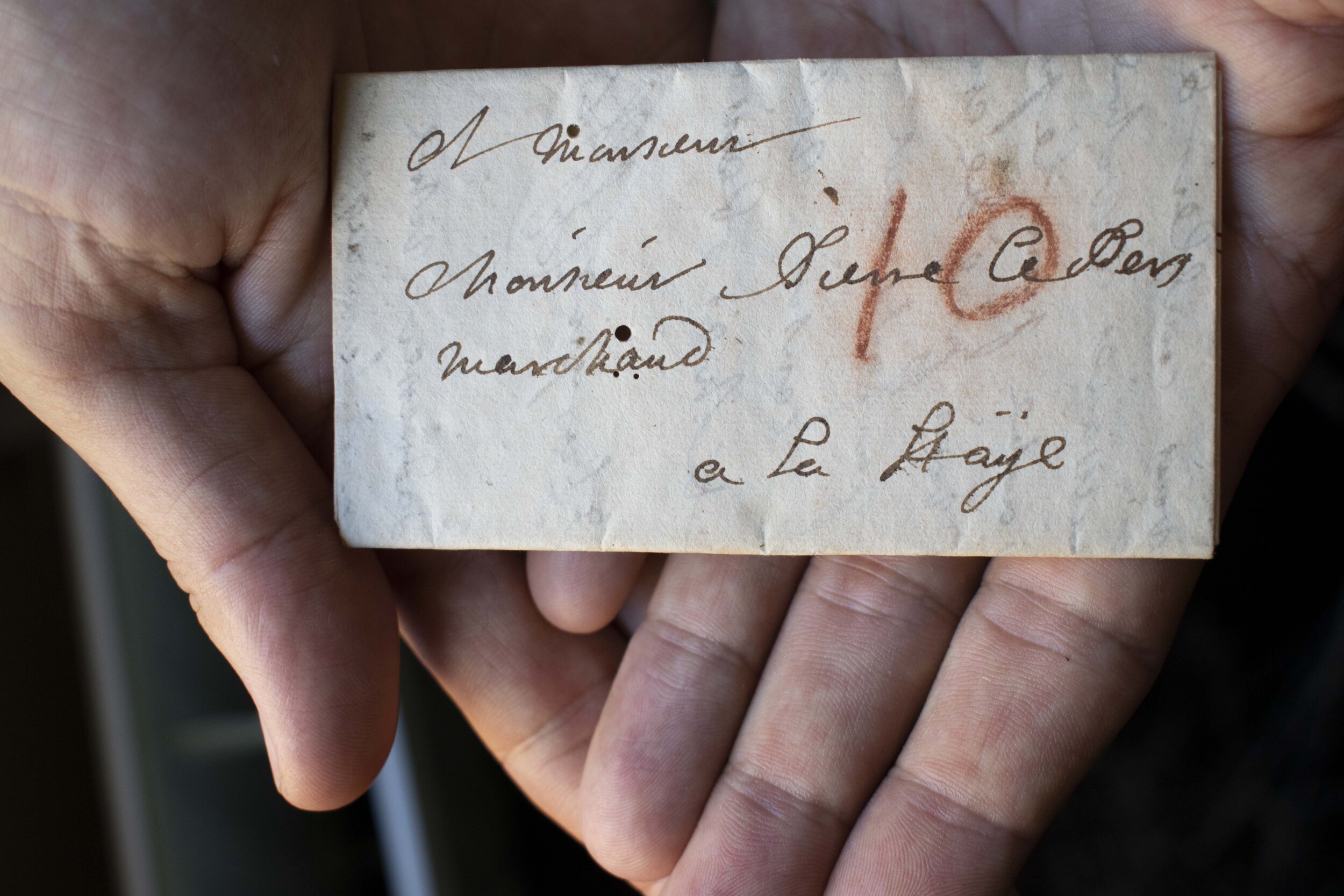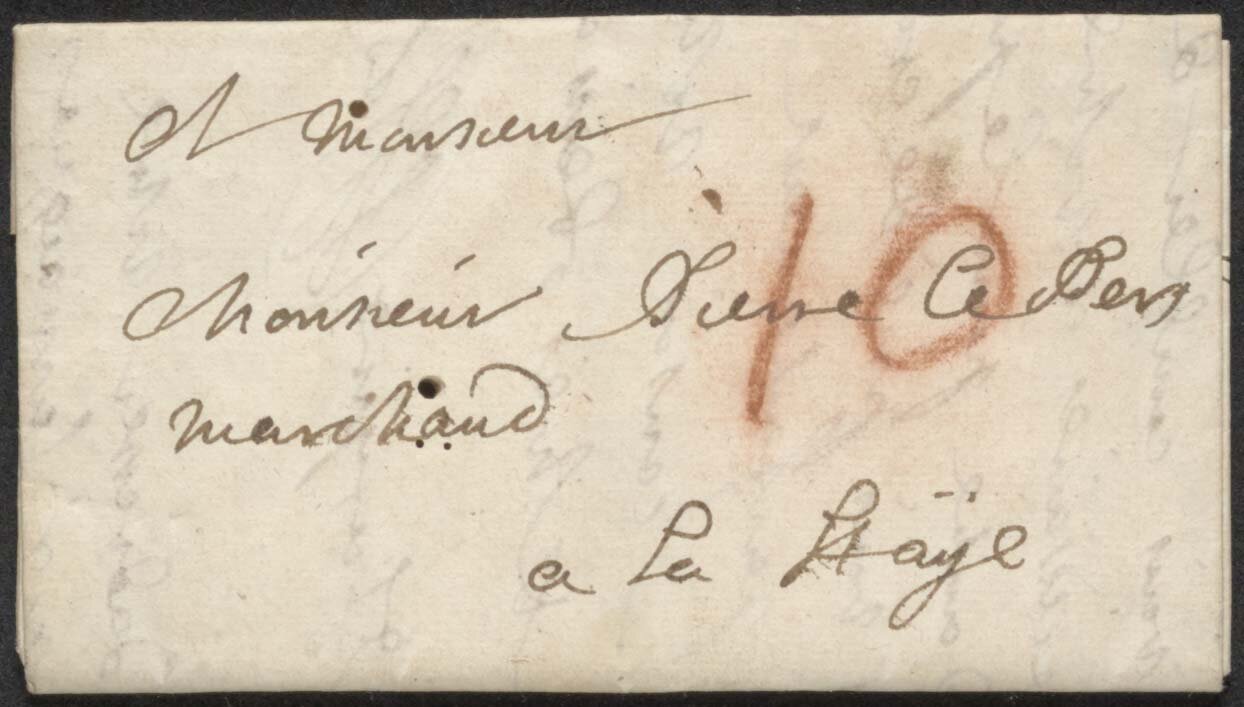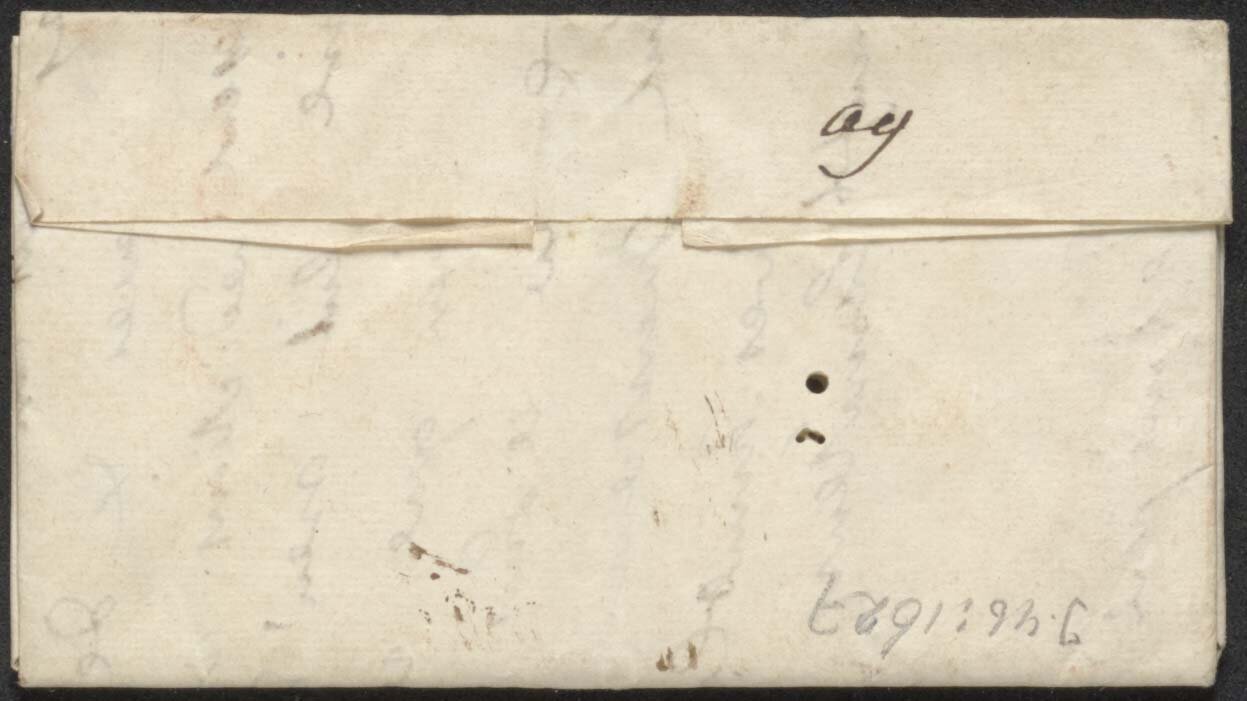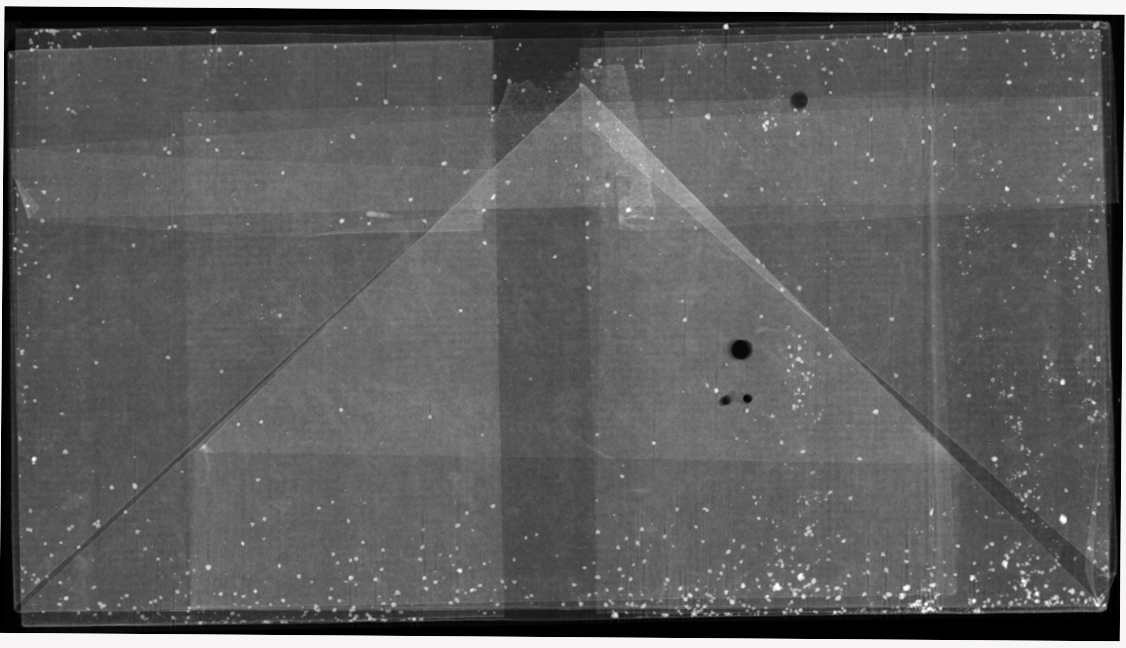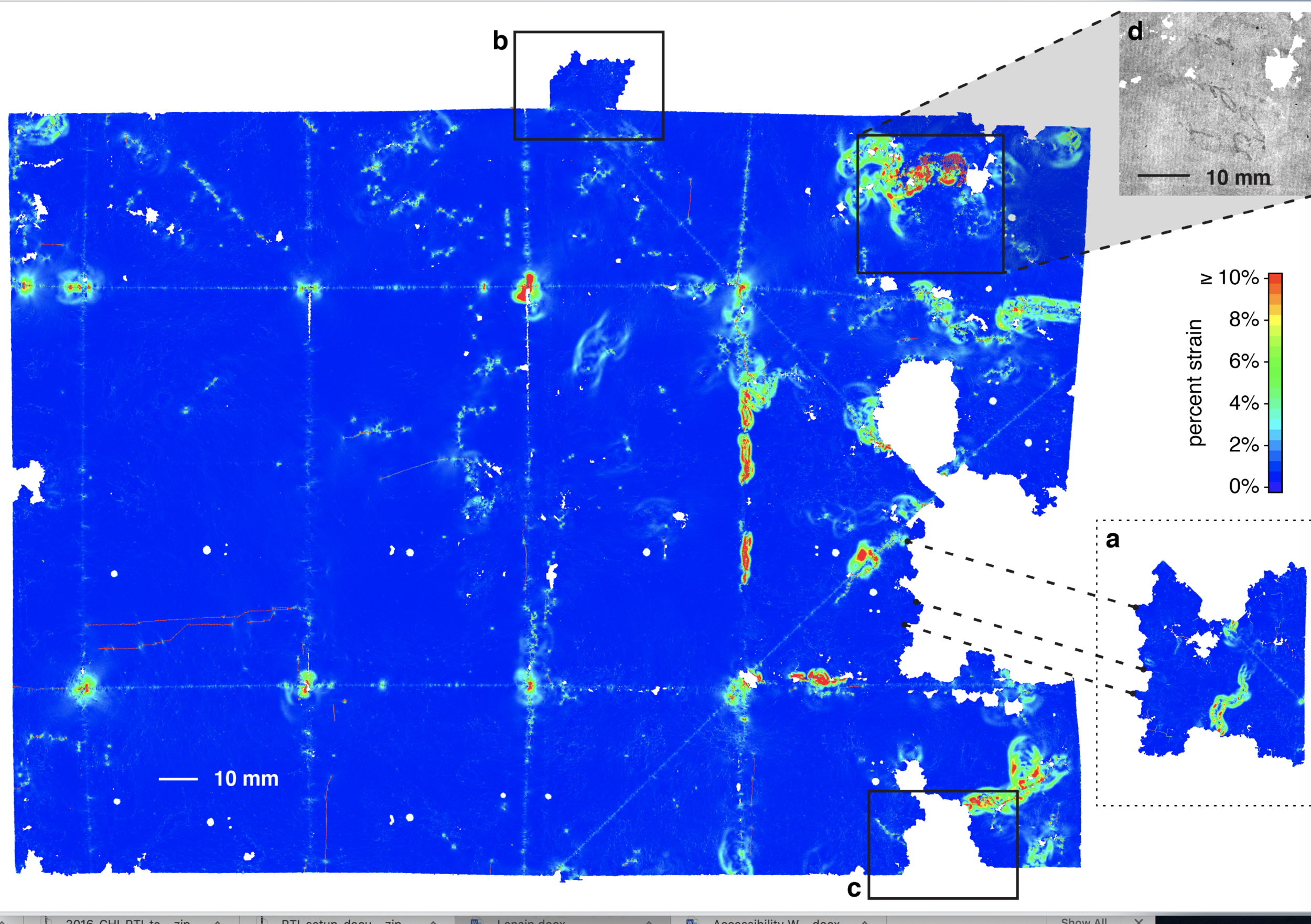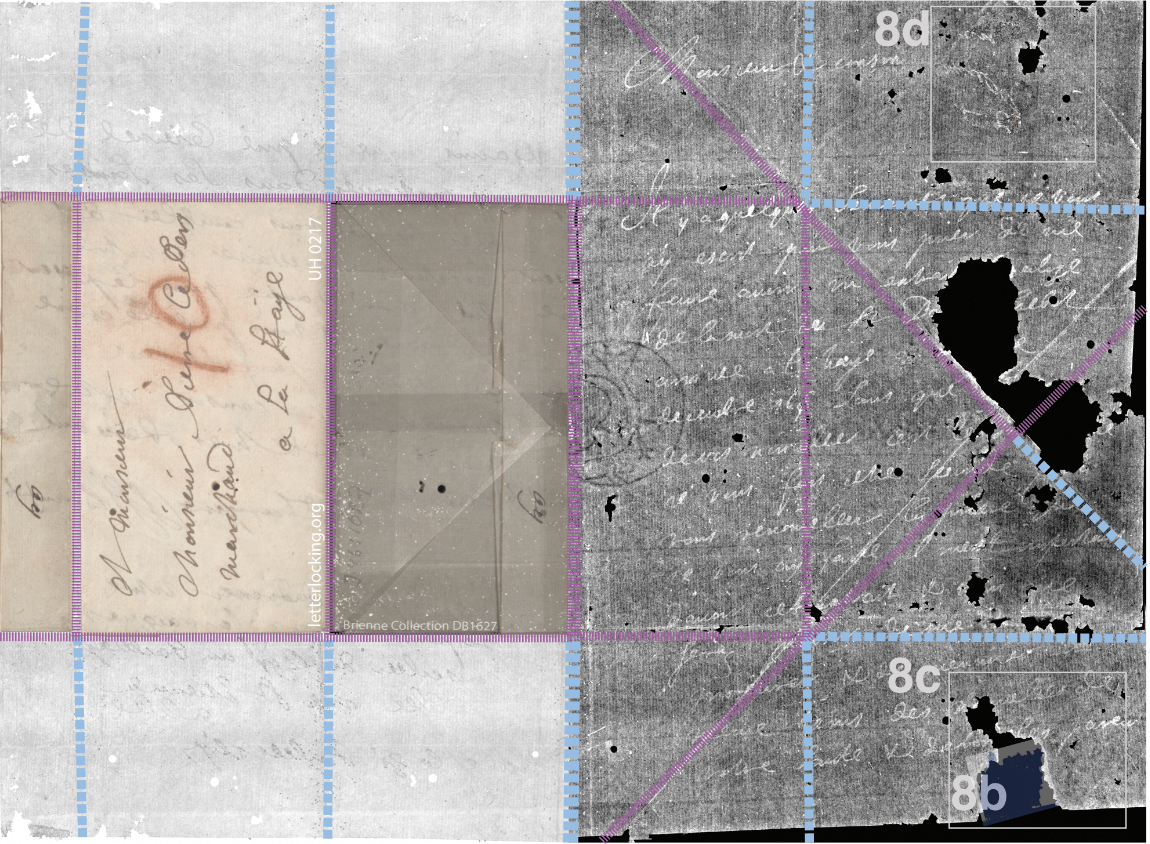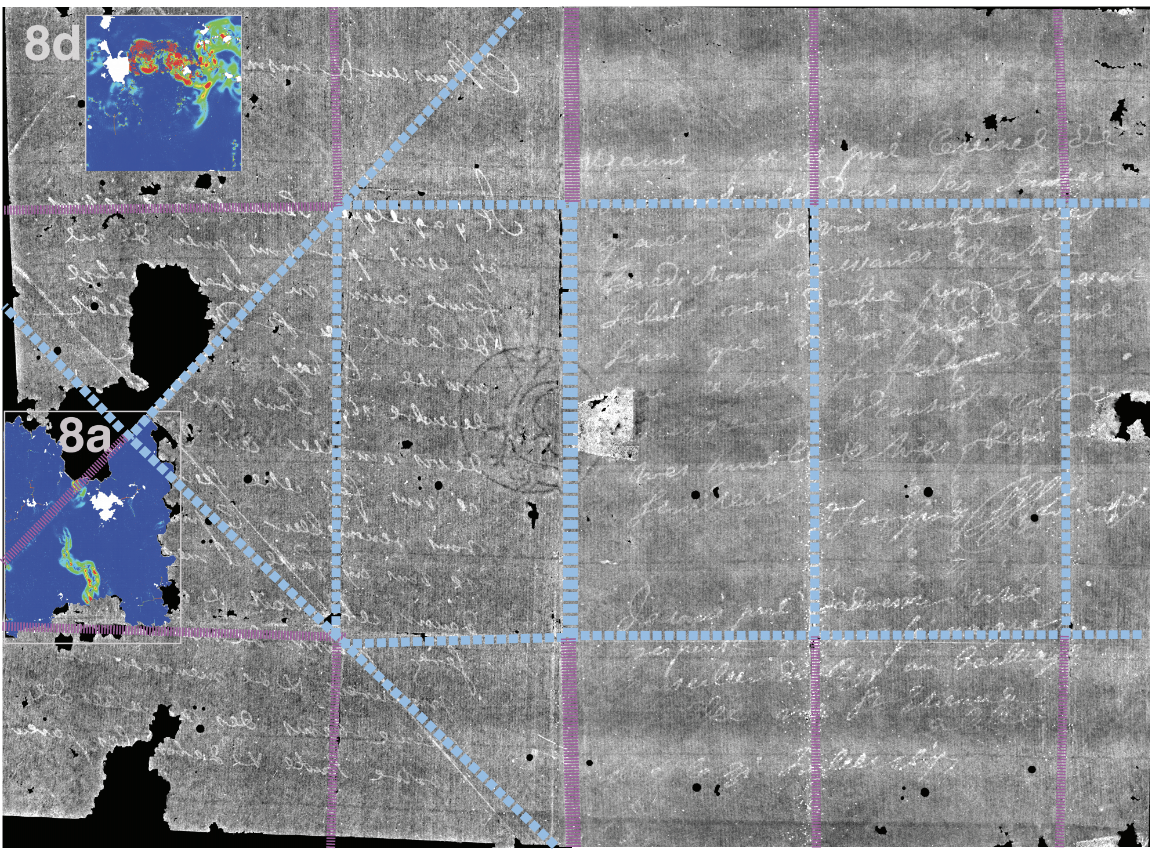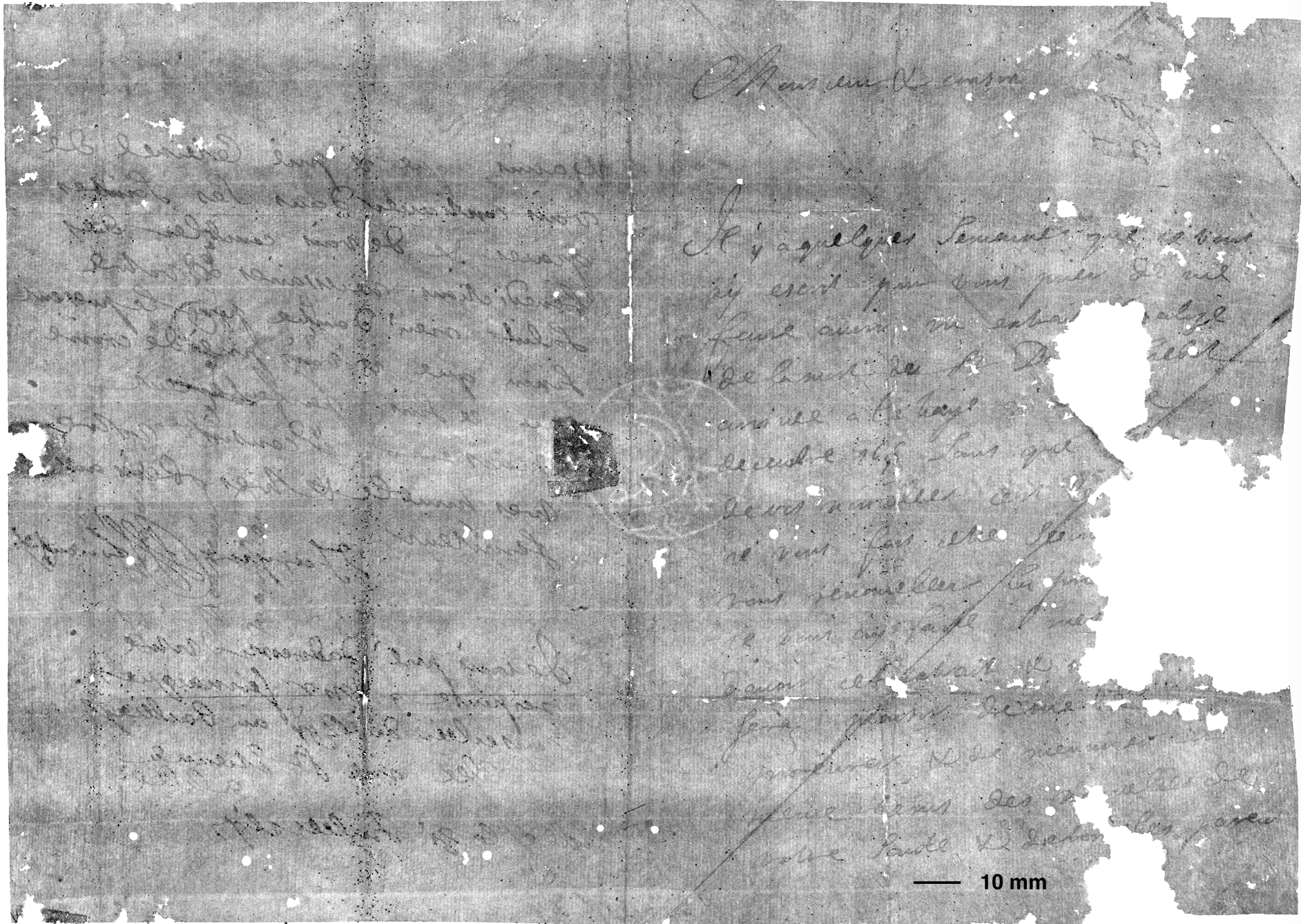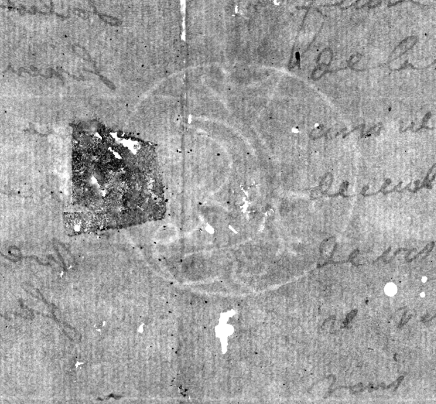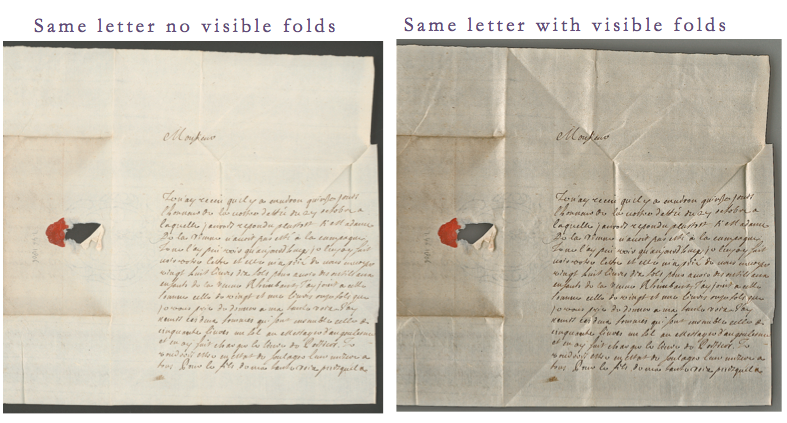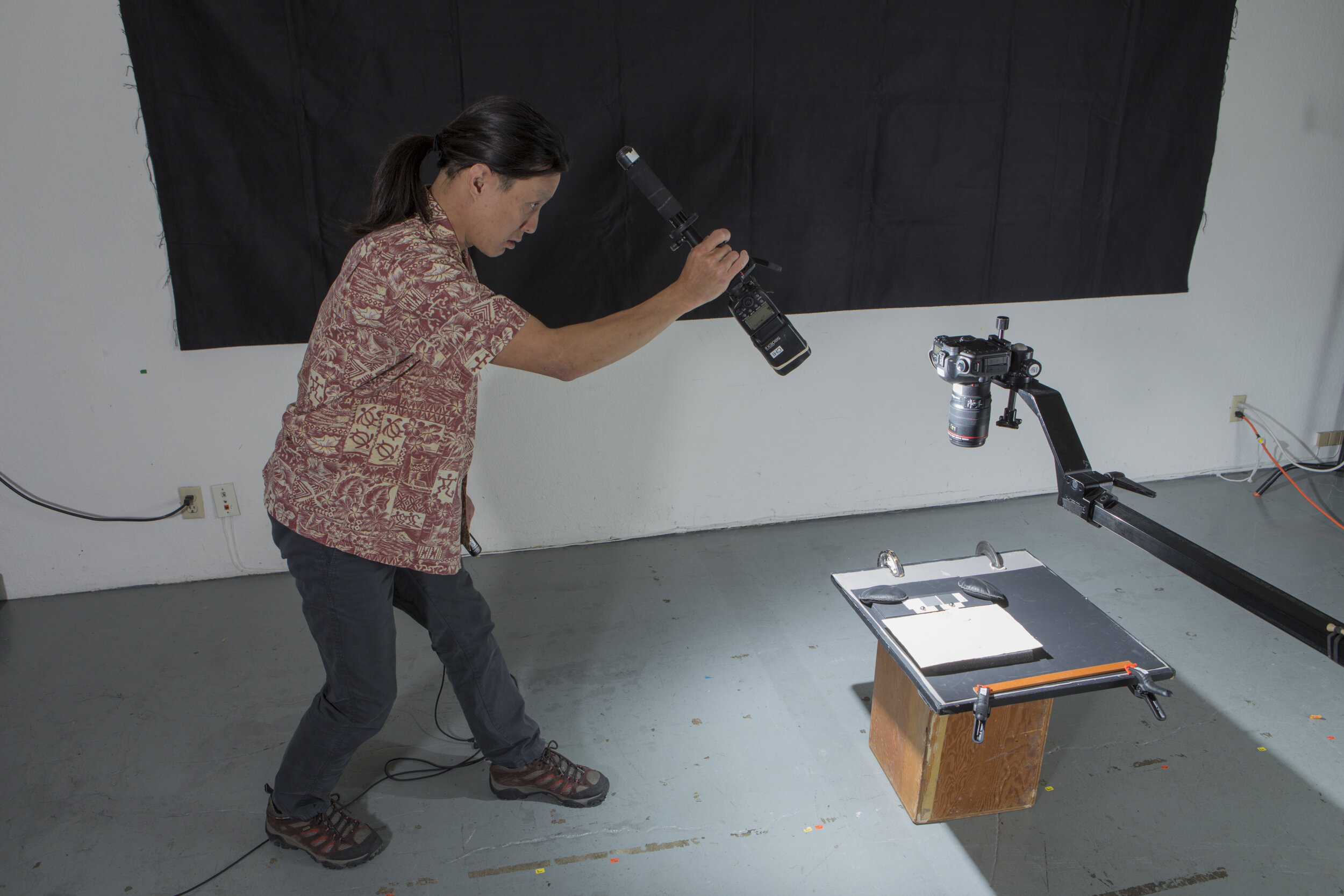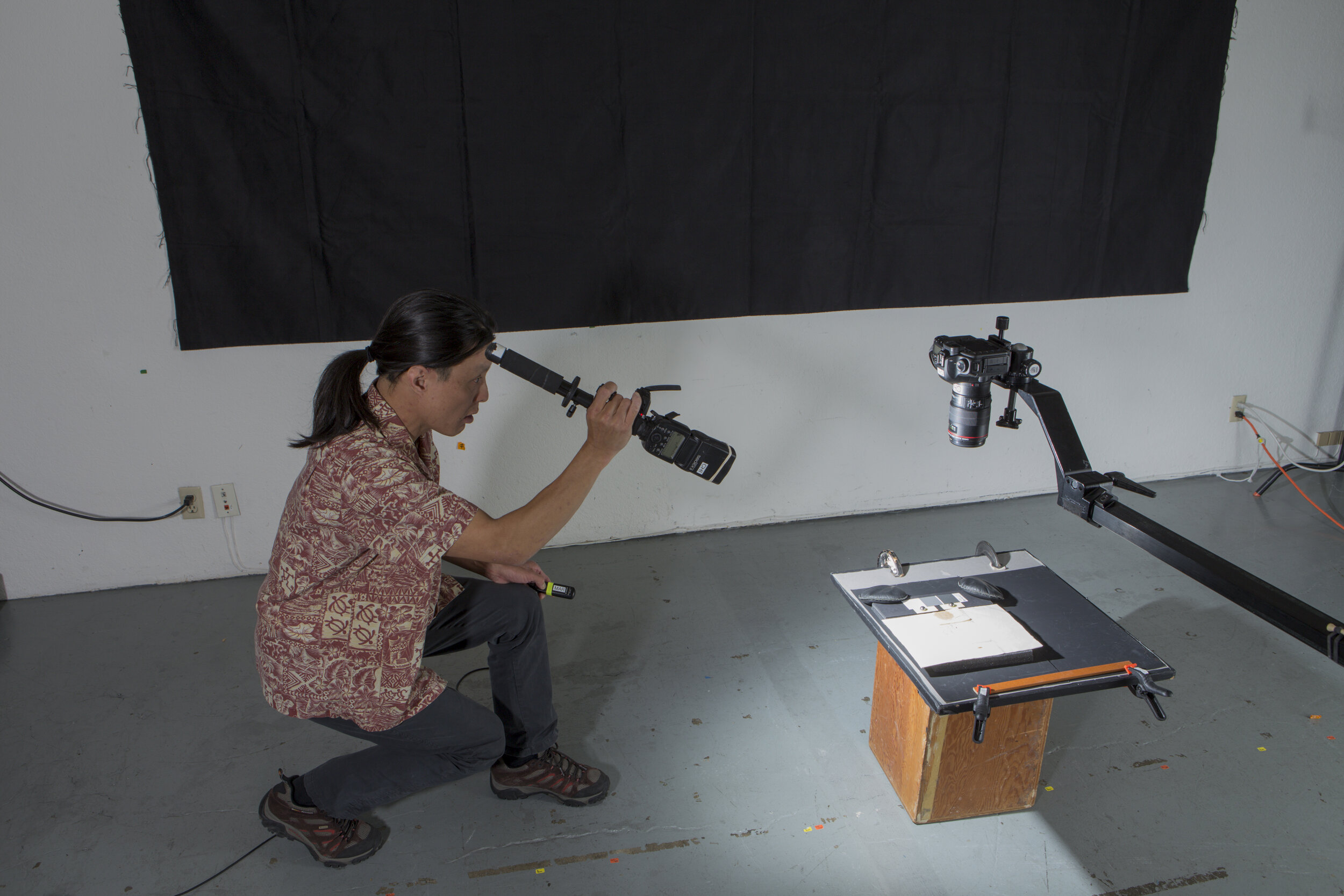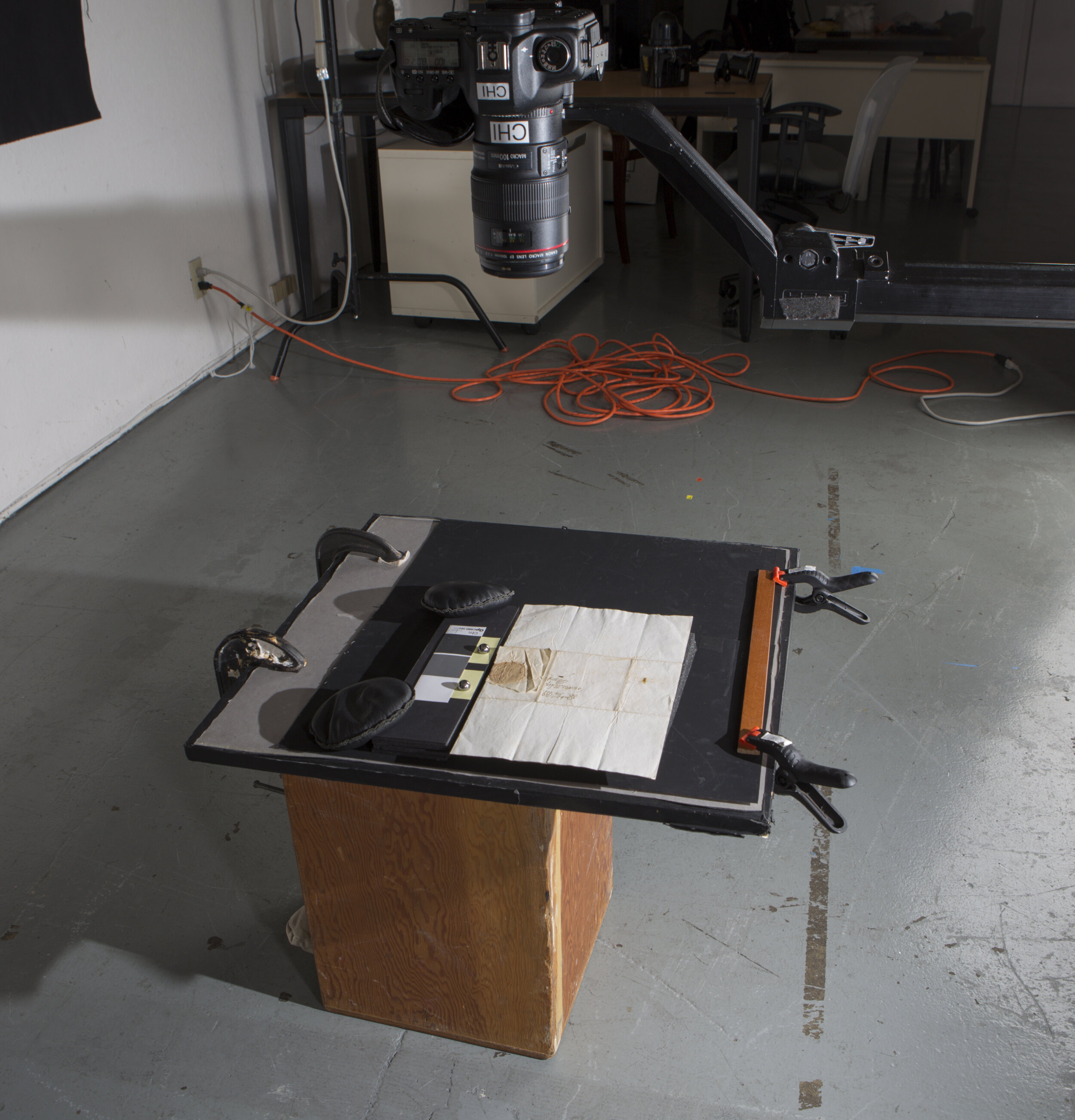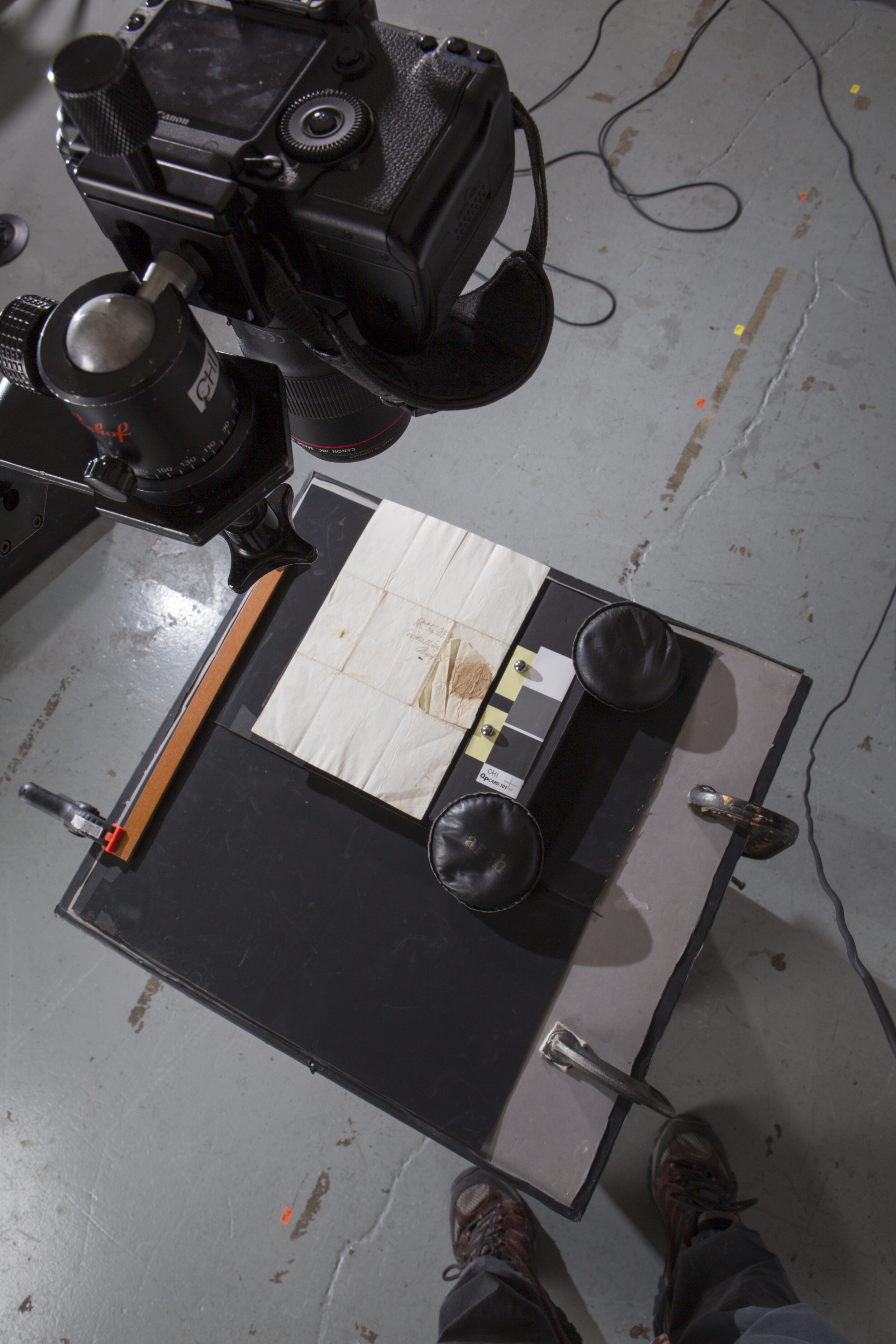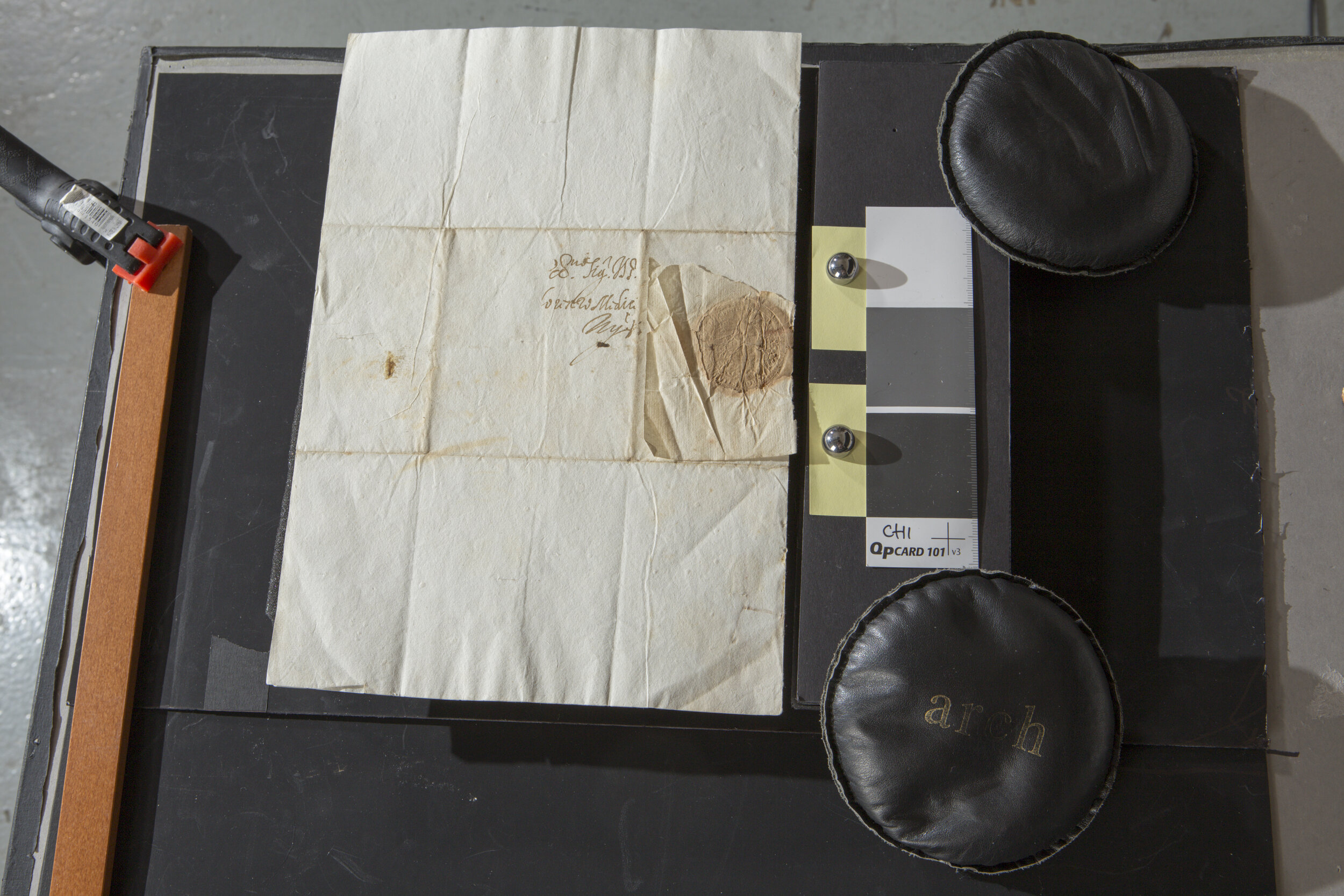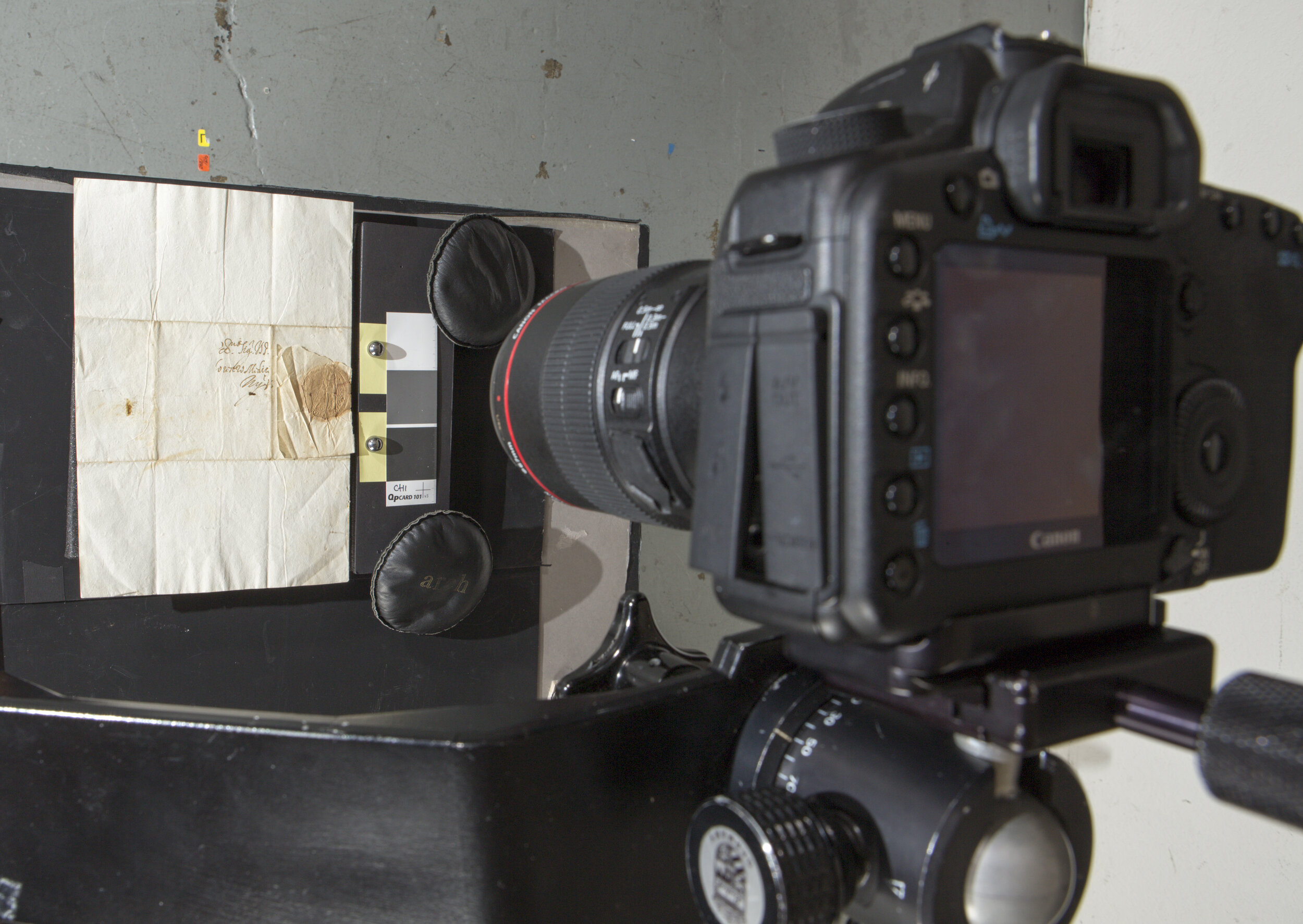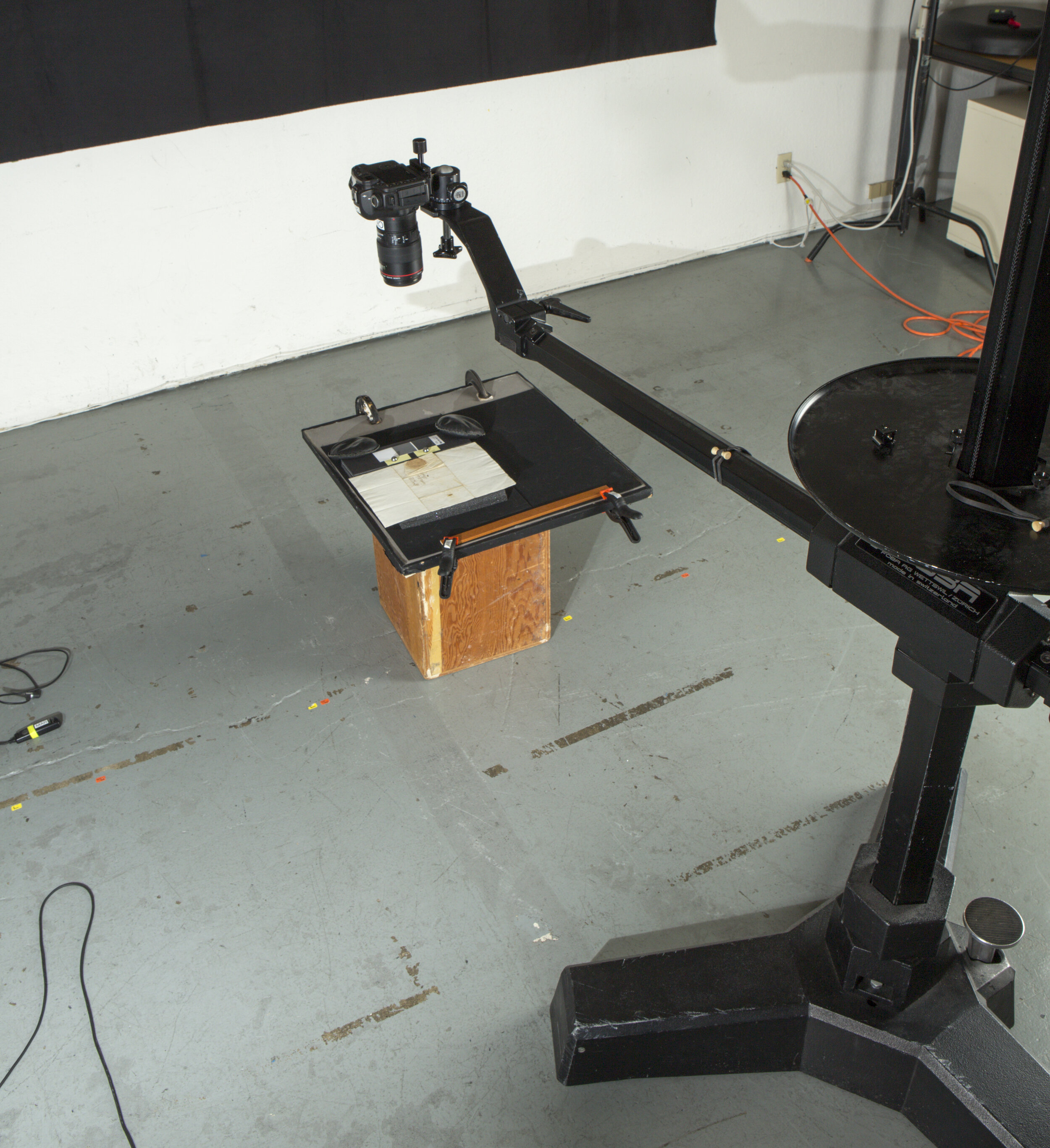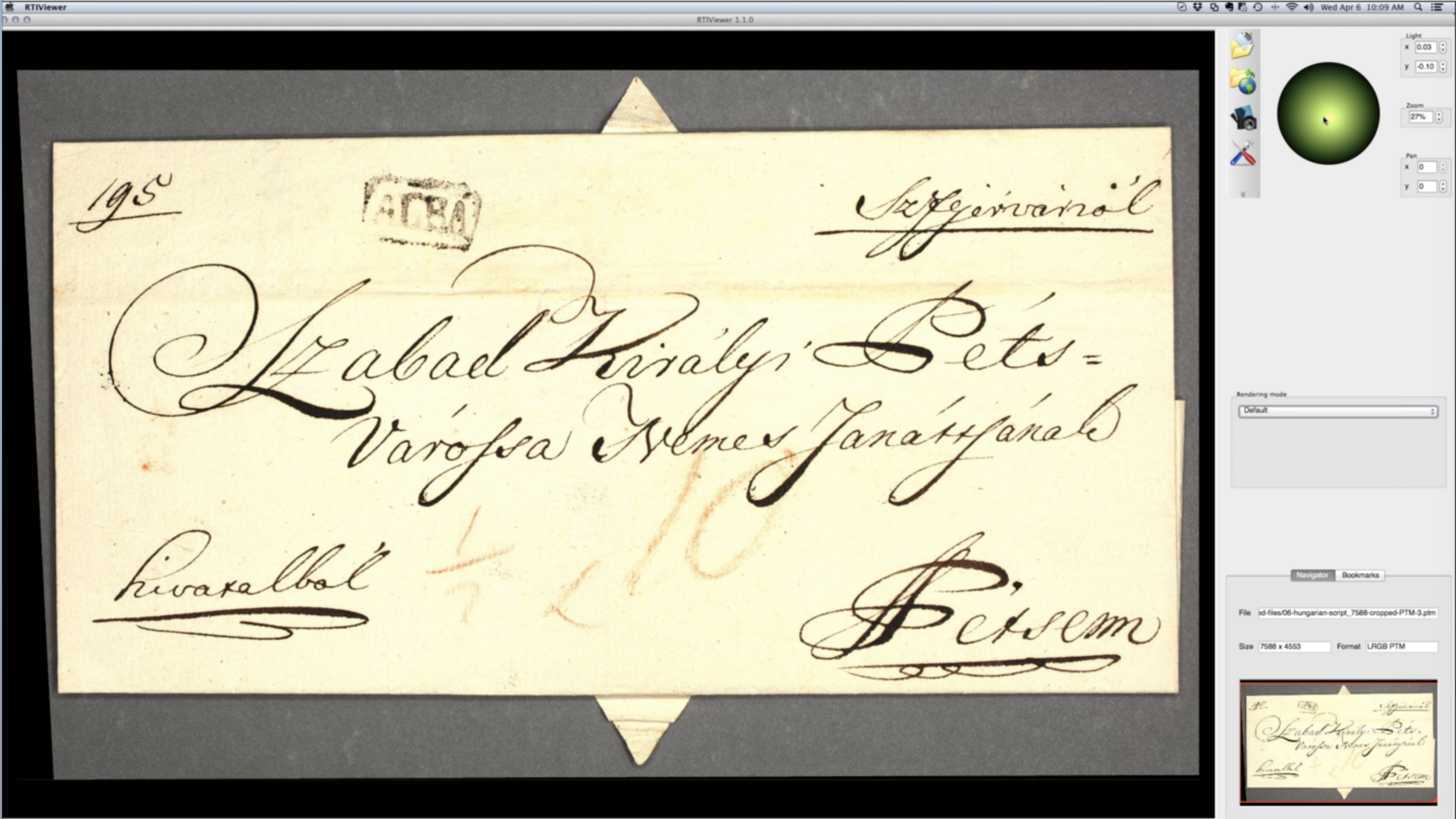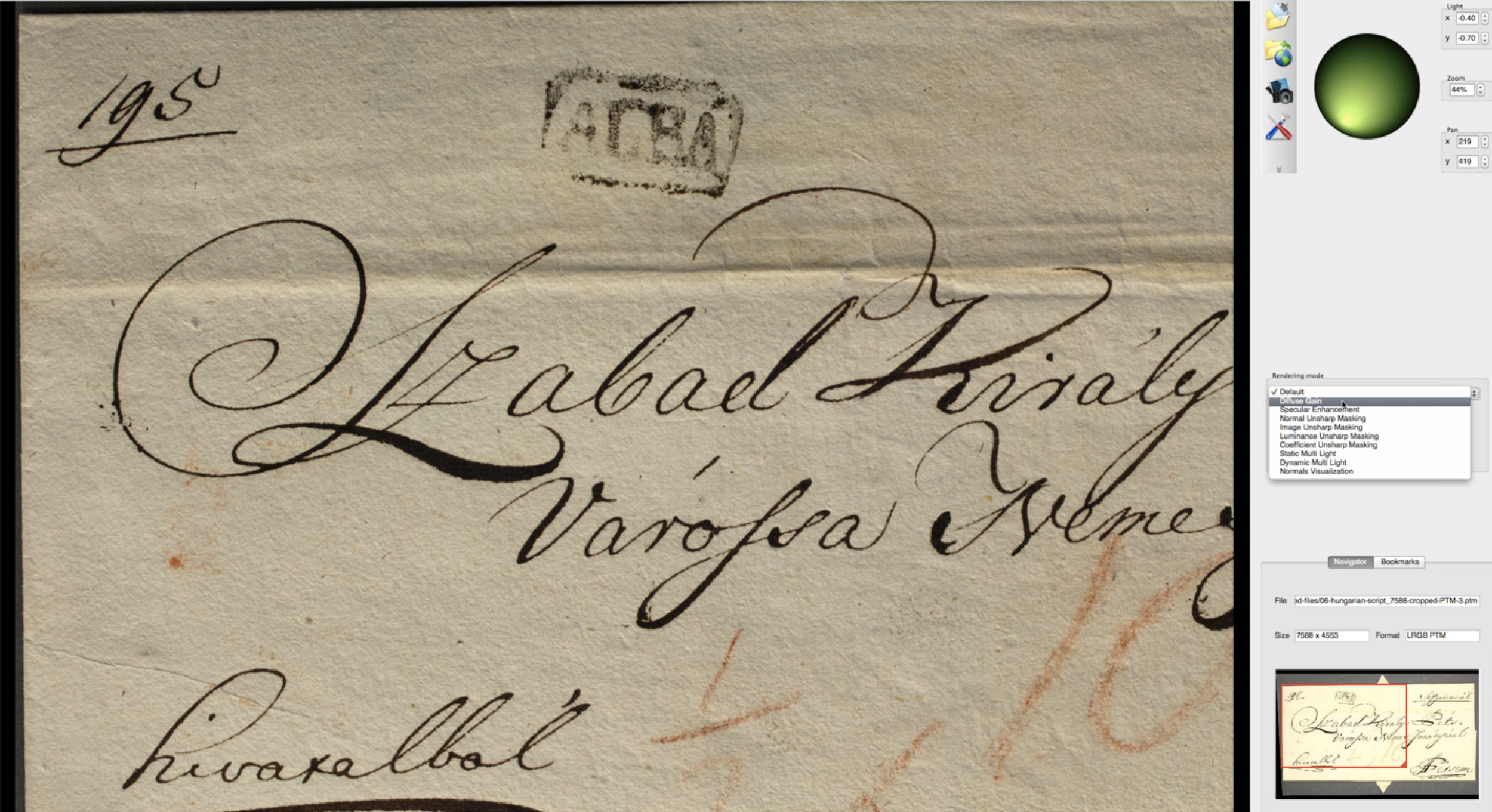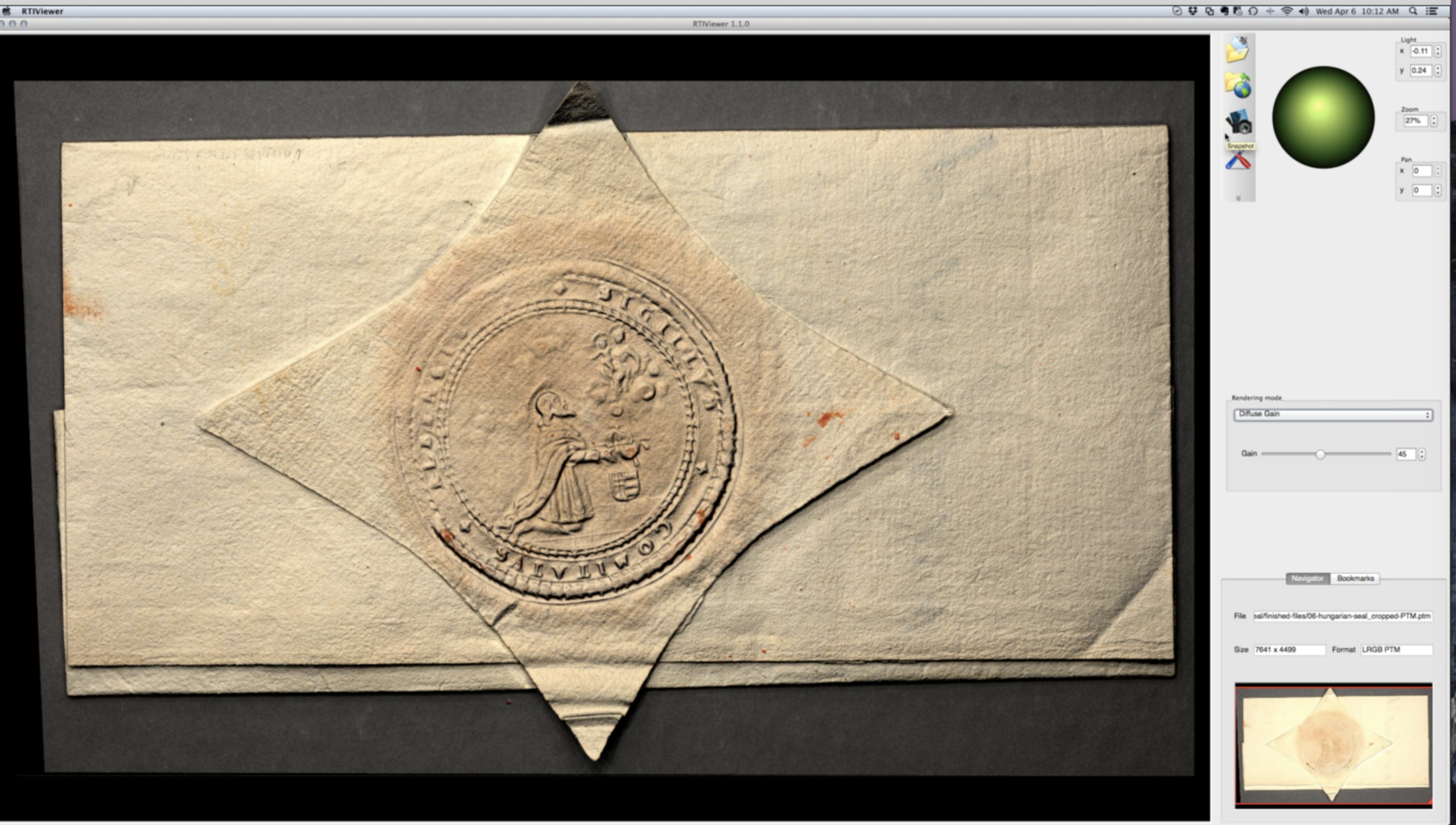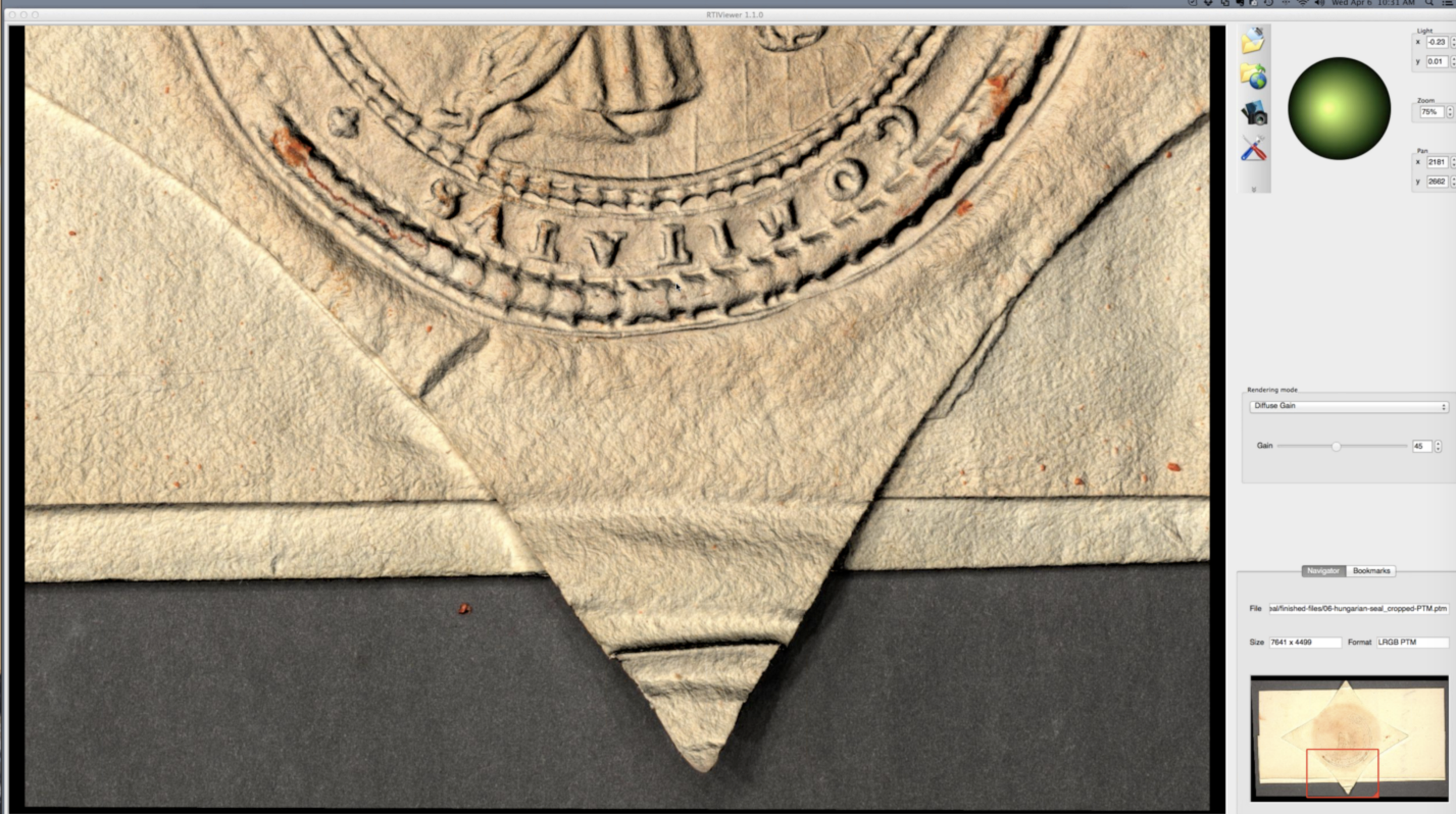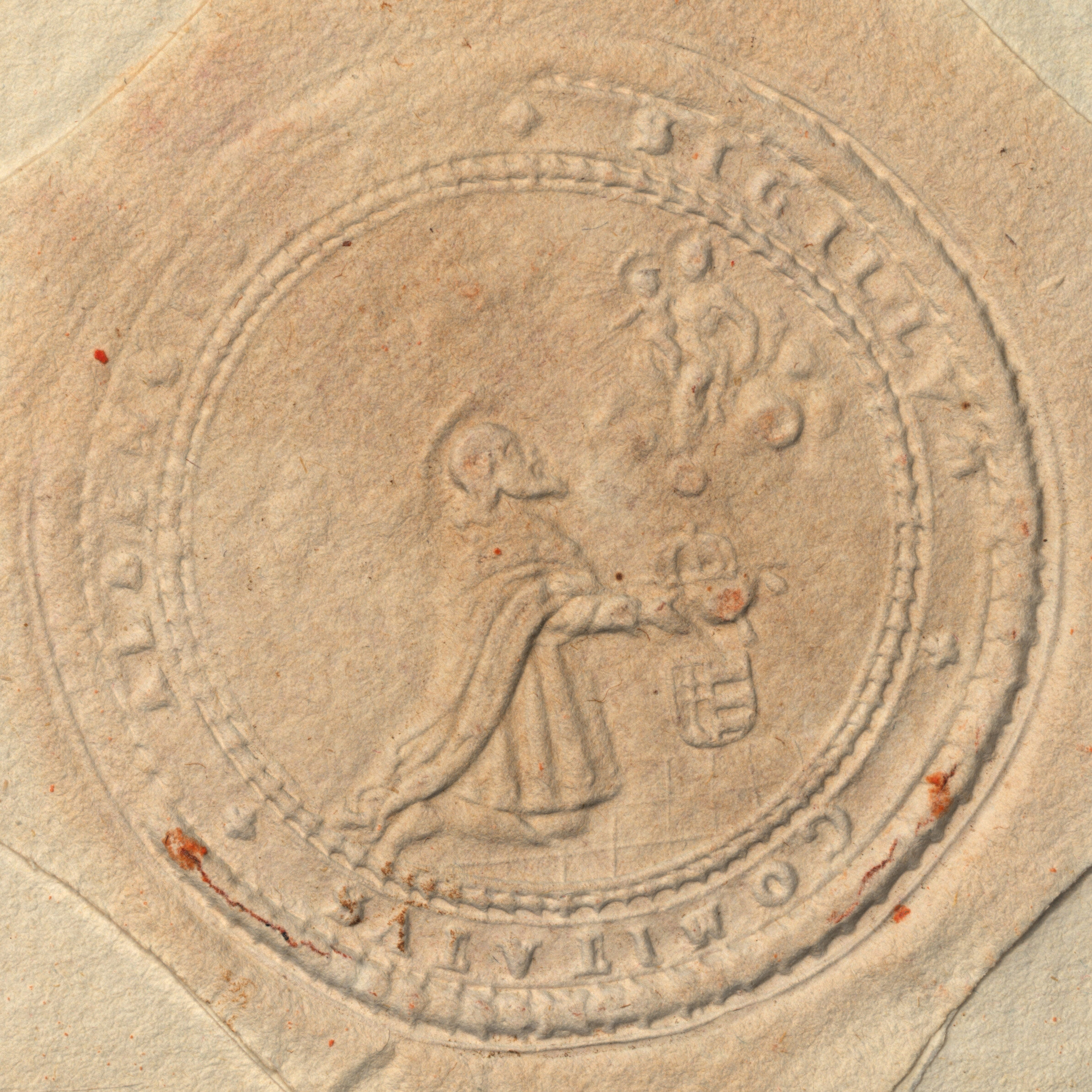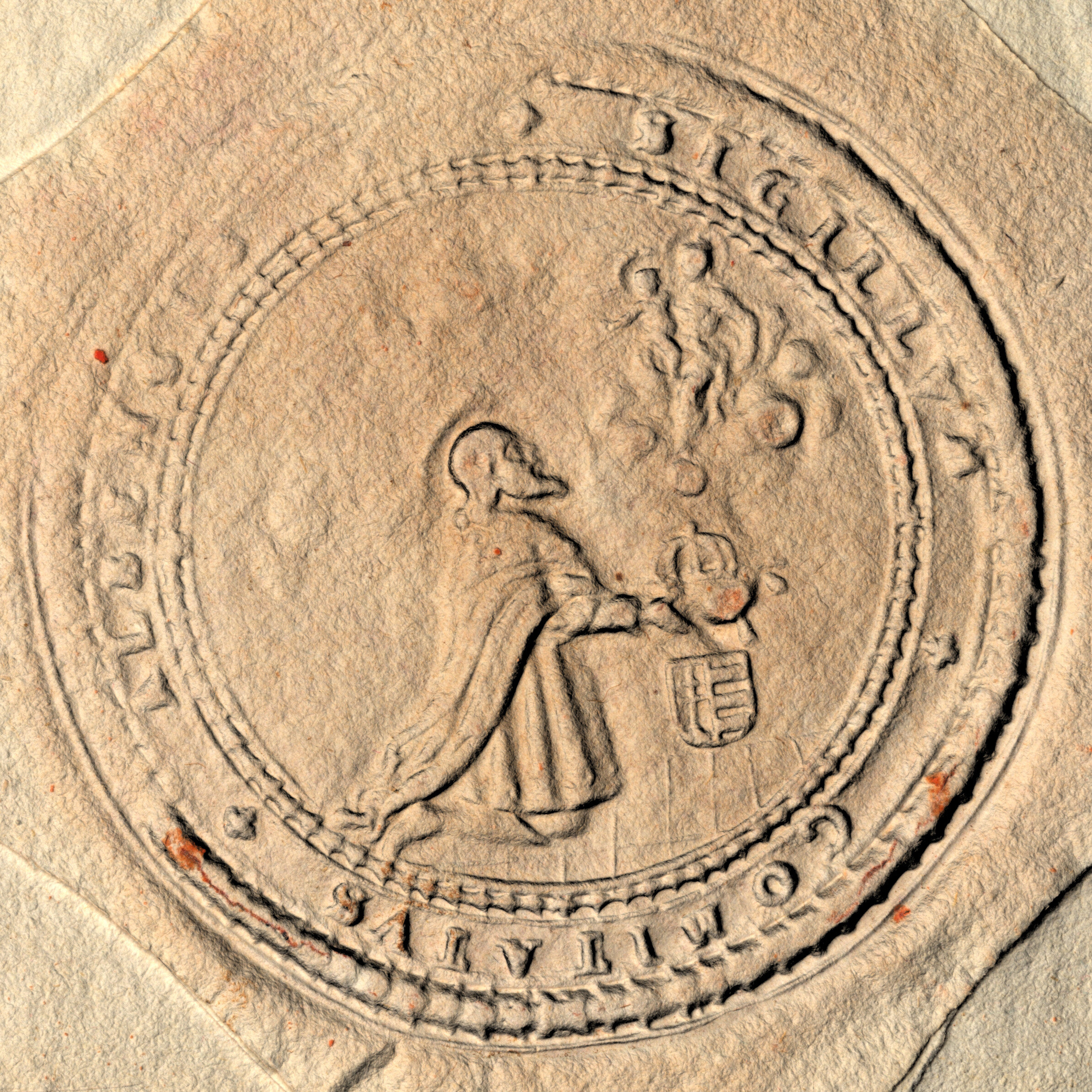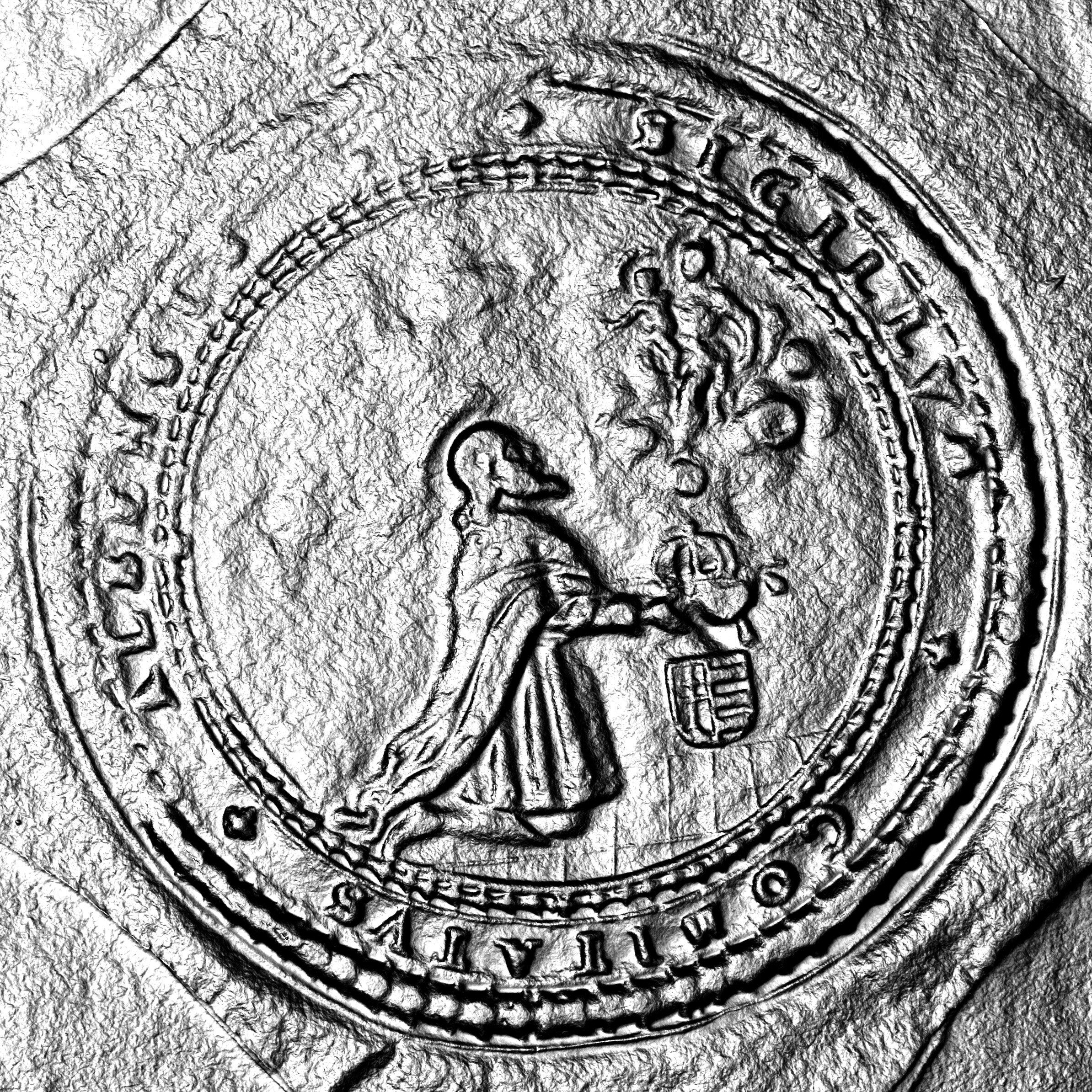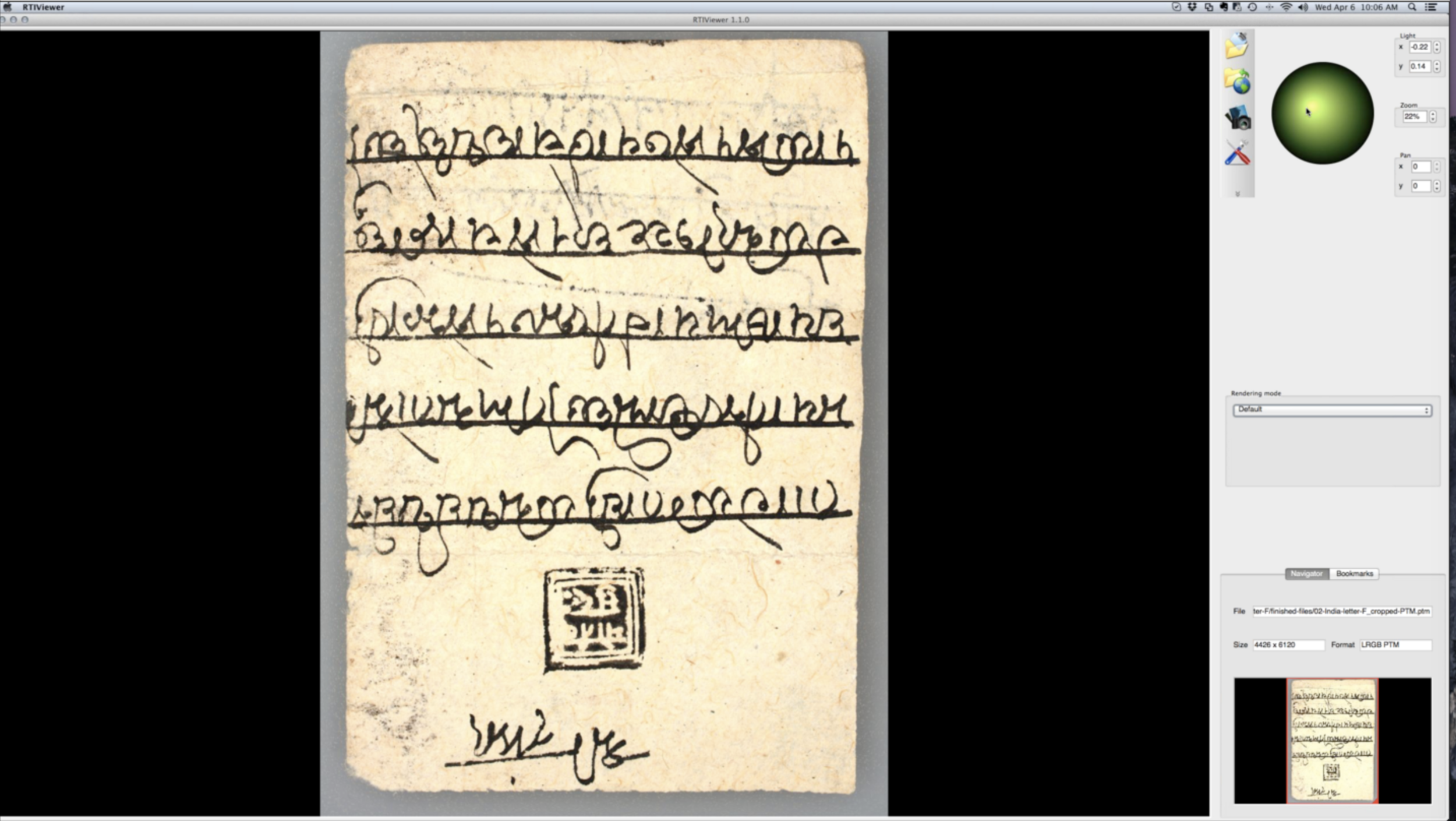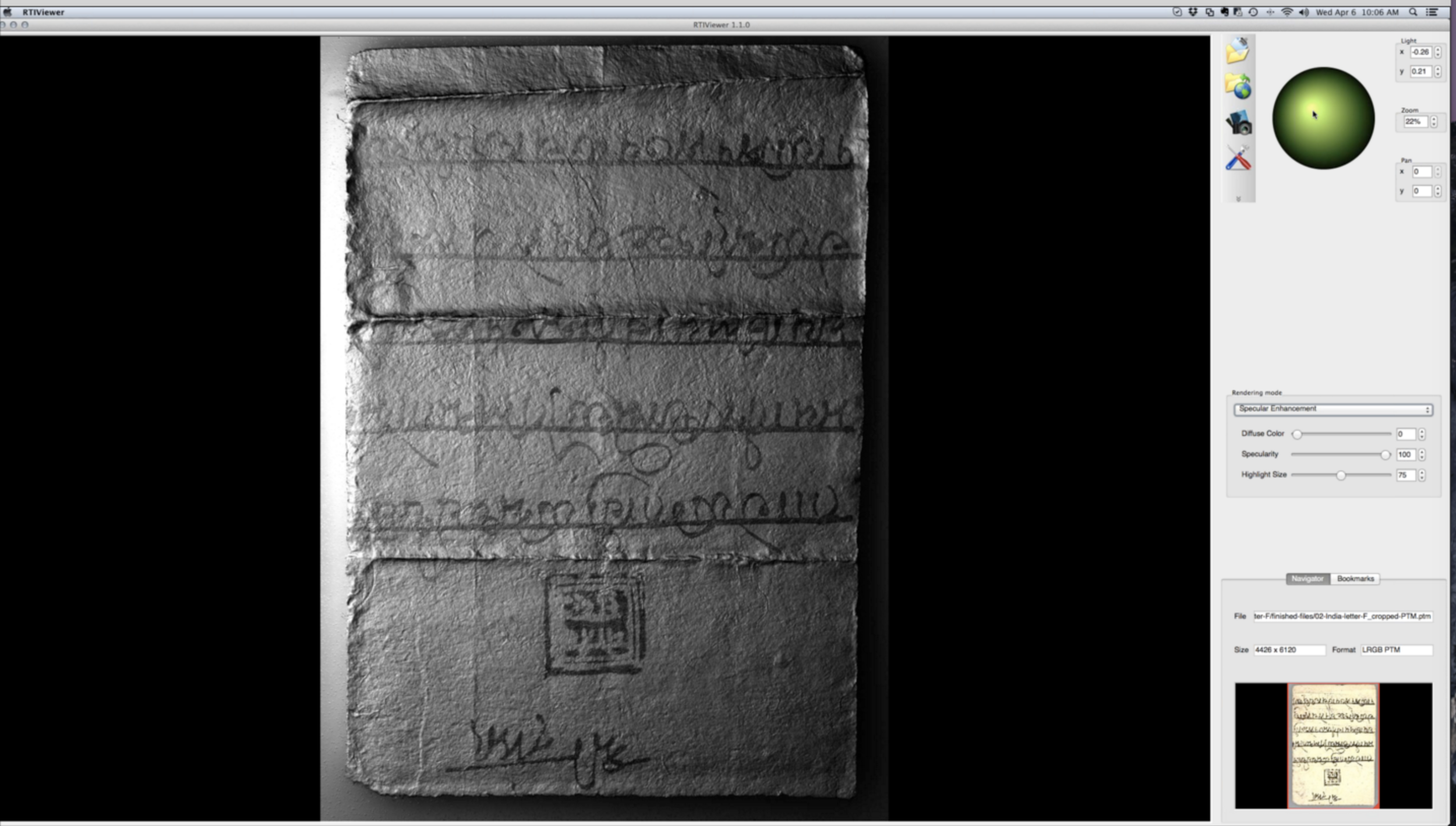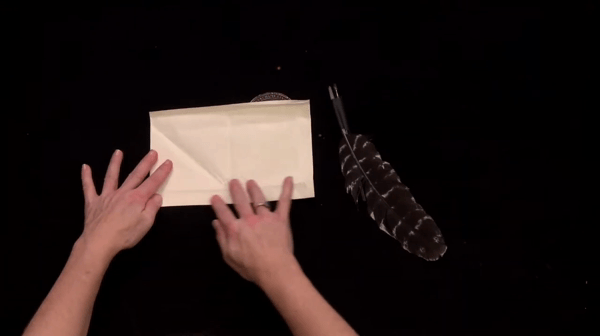Models of locked letterpackets imaged by Microtomography Research Group, Queen Mary. 2015.
Imaging: Virtually read a 300-year-old sealed letter; A World First!
Welcome to our page of images and animations of letters including XMT scanned and virtually unfolded letters from the Brienne Collection, and models you can print out and fold at home.
In March 2021, our team virtually unfolded one of the 577 unopened letters found in the Collection. Our team of 11 researchers worked together to read virtually the contents – the words and the folds – for the first time, without ever breaking its seal.
Jacques Sennaques’ letter is one of 577 UNOPENED letters found in the Brienne Collection. Our team of 11 researchers worked together to read virtually the contents – the words and the folds – for the first time, without breaking its seal.
Scroll down to the bottom of the page to learn more about the virtual unfolding process.
UH0218, virtually unfolding a sealed unopened letter from the Brienne Collection, DB-1538.
UH0217 (DB-1627)
What does the letter say and how was it folded?
Final reconstruction of DB-1627.
Imaging Locked Letter Collections
We use various techniques to image locked letters. Here are brief descriptions about each process.
Normal Illumination
Art In Print
Texturized imaging with normal illumination
The Brienne Collection. Images courtesy of The Sound & Vision (The Hague, The Netherlands).
Algorithmic Computation
by Cultural Heritage Imaging (CHI)
Photogrammetry
Reflective Transformational Imaging (RTI)
“A computational photographic method that captures a subject’s surface shape and color and enables the interactive re-lighting of the subject from any direction. RTI also permits the mathematical enhancement of the subject’s surface shape and color attributes. The enhancement functions of RTI reveal surface information that is not disclosed under direct empirical examination of the physical object.” See examples of RTI used on letters from the Unlocking History’s Historic Manuscript Collection in the DoLL seal entry image gallery.
by Microtomography Research Group
X-ray imaging / micro-XMT scanning
“We’re x-raying history,” says Dr David Mills. Professor Graham Davis adds: “Who would have thought that a scanner designed to look at teeth would take us so far?”
CT Scan Cross-Sections, “Letterset 3”, virtually unfolding process 2016–2021
The following drawings, images. fly-through animations, and reconstruction videos show our latest virtual unfolding results, as well as some animations of the reconstruction process in progress. “DB” numbers (DB-0046, DB-0048, DB-1538, DB-1627, DB-1976, and DB-2040) refer to shelfmarks in the Brienne Collection held at Sound & Vision (The Hague, The Netherlands).
Fly-through Animations
Fly-through of a scan of 10 letterpackets from the Brienne dataset, showing cross sections of the folded letterpackets.
Time delay integration, computed micro-tomography
Courtesy of the Apocalpto Project. A video showing the layers of a high contrast TDI CT (Time Delay Integration, computed micro-tomography) test scan of a bundle of 20 locked letters. Using historic letterlocking formats, iron gall ink, a quill, and sealing wax, the #SignedSealedUndelivered team made up the batch of new letters for testing, writing secret messages inside, folding them using historic letterlocking formats, and sealing them with wax. The Unlocking History Research Group and their collaborators are developing the technology virtually reveal the contents and folding patterns to be revealed without tearing open the letters.
What is Virtual Unfolding?
Virtual unfolding is a computational process that analyzes CT scans of folded letterpackets and creates a flattened image of their contents. This process allows us to read the contents of sealed, historical documents – showing their text legible for the first time since they were sent some 300 years ago – without damaging the rare artifacts. Our virtual unfolding pipeline generates a 3D reconstruction of the folded letter, a corresponding 2D reconstruction representing its flat state, and flat images of both the surface of the writing substrate and each letterpacket’s crease pattern. For a full explanation of our findings see our Nature Communications paper. Our latest code can be found on Github.
UH0218 (DB-1538)
DB-1538 final flattened result..
DB-1538, a virtually unfolding of a sealed letter.
DB-1538, a virtual unfolding, exploded view of letterpackets.
DB-1538 final flattened result, a flattening and growing animation.
UH0219 (DB-1976)
Final reconstruction of DB-1976.
UH0166 (DB-2004)
VARIOUS RENDERINGS OF AN OPENED LETTER FOUND IN THE BRIENNE COLLECTION, SOUND AND VISION THE HAGUE, THE NETHERLANDS.
UH0046 (DB-2199)
Final reconstruction of DB-2199.
UH0048 (DB-2040)
Final virtual reconstruction of DB-2040.
“When we got back the first scans of the letterpackets we were instantly hooked,” says Amanda Ghassaei. “Sealed letters are very intriguing objects, and these examples are particularly interesting because of the special attention paid to securing them shut.”
